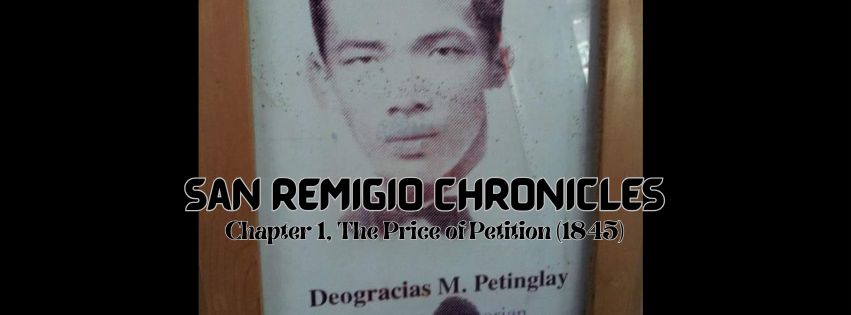San Remegio Chronicles: Chapter 1, The Price of Petition (1845)
(Rewritten from the account of Deogracias M. Petinglay)
SAN REMIGIO
Rosalinda Velasco Petinglay
10/23/20252 min read


The history of San Remegio, whispered down through the generations, begins not with a grand battle, but with a quiet desperation. By the 1840s, life in the hamlets surrounding the town was defined by fear. The historical localities—Bato-Cueva, Langagon, Igbaong, Talakuan—were less communities and more temporary shelters from the bandits and criminals who poured in from the interior of Iloilo. The inhabitants were perpetually subjected to molestations, robbed of their animals, clothes, and meager belongings in terrifying night attacks. When word of an impending raid reached the authorities, a local posse would be formed, its men armed with bolos and spears, ready to repel and pursue. Victories were rare, and sustained peace was nonexistent.
In the barrio of Tigbagacay, one man grew weary of this endless cycle of defense and loss: Don Rafael Agustin Baladjay. A respected and prominent son of the community, he possessed the rare courage to seek a permanent solution. In 1845, Baladjay went to the provincial capital not with a weapon, but with a petition. He implored the authorities to help safeguard the tranquility of his people and to allow for the formation of organized local patrols.
His appeal was a futile gesture of hope. The Spanish provincial government dismissed the idea, deeming it to be "against the policies of the government at that time." Worse than simply refusing aid, the authorities saw Baladjay's act as an intolerable challenge to their control. For daring to speak up for his community, Don Rafael Agustin Baladjay was arrested and summarily imprisoned in the Antique Provincial Jail.
When the men of Tigbagacay received word that their beloved advocate had been unjustly jailed, their frustration boiled over into decisive action. They did not call for another meeting; they took up arms. Organized and united, the male citizens of the barrio marched on San Jose, determined to free their idol.
The moon was high, and the night was dense with shadow as they arrived in Atabay, capturing and killing some of the night guards to secure guides for the prison cells. It was near midnight when they reached the jail. Most of the soldiers were asleep, save for the solitary sentinel who walked the silent halls. In a blur of movement, one of Baladjay’s men leaped forward, engulfing the small lamp that lit the cell door in darkness. Paralyzed by sudden fear, the sentinel could only watch as the rebels set upon the lock, breaking open the cell.
Freed, Don Rafael and his liberators did not linger to celebrate. They immediately turned their backs on the capital and vanished back into the jurisdiction of Tigbagacay, taking refuge in the safety of the Manlabog mountains where they regrouped their forces. The government forces, enraged by this brazen act, mobilized to crush the rebellion. Baladjay was recaptured after several bloody skirmishes and subjected to torture before being shipped far away, deported to the remote island of Burias.
Yet, even exile could not crush his spirit. In Burias, he lived with such dignity and diligence—befriending the natives and planting useful trees—that the authorities were eventually forced to acknowledge his good conduct. He was granted a pardon and allowed to return home, where he led a quiet life until his death. His legacy of defiant courage, however, had already taken root. It would be passed on through his daughter, Teodora Baladjay, whose marriage into the Masa family planted the seeds for the next generation of freedom fighters.
